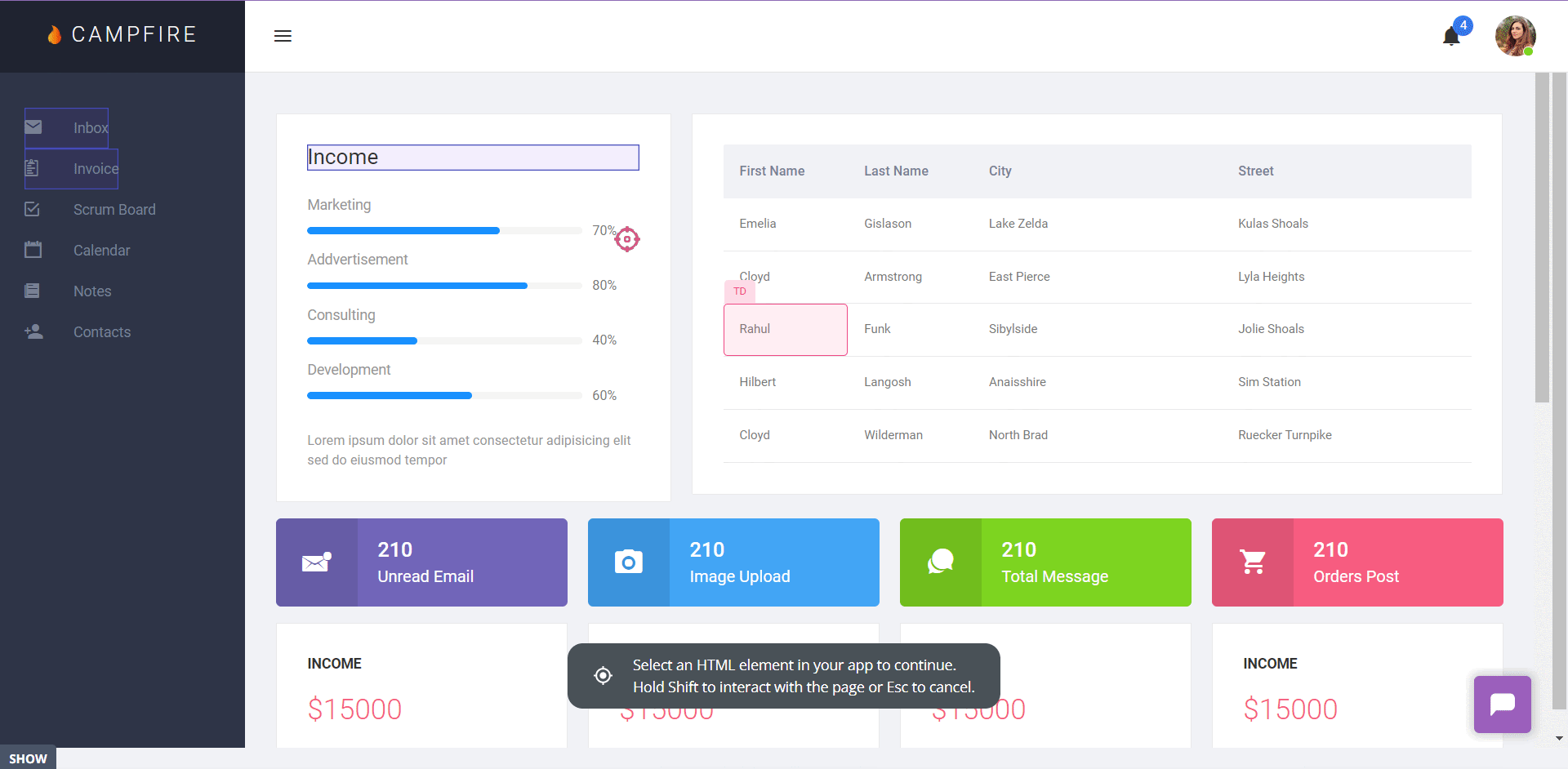
What Are User Tasks and How to Analyze Them for Successful Product UX?
For any SaaS owner or product manager, understanding your customers’ daily lives and the user tasks they need to complete to achieve their goals is vital.
In this article, we’re going to unpack a repeatable framework for you to analyze user tasks to create successful user experiences.
Let’s get straight into it!
What’s your biggest challenge with understanding user tasks?
How do you currently guide users through their most important tasks?
Ready to master your user tasks and boost conversions?
See how Userpilot provides the tools to analyze, guide, and improve how users complete their tasks. Turn confusion into conversion.
Try Userpilot Now
See Why 1,000+ Teams Choose Userpilot

Summary of user tasks
- User tasks are the clearly defined steps a user needs to complete in order to solve their problems and tackle their jobs to be done.
- User task analysis describes the process of observing users, building base knowledge about the actions they take within your product, and analyzing how they contribute toward goals.
- So what’s the difference between user goals and user tasks? A goal describes the overall thing they’re trying to achieve, and a task is a more specific activity that helps them achieve those goals.
- User task analysis is an important tool. The better you understand the tasks your users are undertaking, the more effectively you’ll be able to meet their needs. Additionally, task analysis helps you design without bias, and identify friction points.
- There are two points in the product design process when a team might consider conducting a task analysis: when building an entirely new feature/product, or when looking at updating or enhancing an existing feature.
- So, how do you go about conducting task analysis in your own product? Let’s break down the steps and help you build something that prompts users to keep going.
- First, you’ll want to decide on the main task (begin with the end in mind). Next, split it up by dividing it into subtasks. Conduct task analysis with distinct user segments to gain accurate knowledge. Analyze their behavior and use what you learn to produce a visualization (i.e., a layered task diagram). Finally, use your insights to remove points of friction and create a happy path.
- There are several examples from across the SaaS world of user task analysis: read on below to find out more.
- There are a few best practices to consider when defining user tasks. Make sure you clearly define your tasks to give users a solid understanding, reflect all the steps in the process accurately, and whatever you do – keep it brief.
- None of this is possible without the right tool for the job: Userpilot is a powerful product adoption platform that’ll help you meet your goals. Book a demo today.
What are user tasks?
User tasks are the clearly defined steps a user needs to complete in order to solve their problems and tackle their jobs to be done (JTBD) when using your product or service.
Here are a few examples to give you context – you can easily imagine these as part of many SaaS workflows:
- Adding team members for collaboration
- Generating performance reports
- Integrating third-party tools
What is user task analysis?
User task analysis describes the process of observing users, recording the specific actions they take within your product, and analyzing how they achieve their goals.
The primary reason why companies perform task analysis is to build a better understanding of their users’ real needs. This enables you to improve your product’s UX by eliminating friction points in the process and reducing users’ mental workload.

What is the difference between user goals and user tasks?
There’s a subtle distinction here, and it’s important to understand the difference.
- User goals. These describe the overarching aims a customer has when using your product or service. They’ll often be part of a wider business strategy.
- User tasks. These are the specific actions and activities a user needs to perform in order to achieve their goals.
Let’s consider an example: a goal might be for a user to create a personalized onboarding experience, and a task might be to implement a welcome survey to collect user data.
Why is it important to define and analyze user tasks?
The better you understand the tasks your users are undertaking, the more effectively you’ll be able to meet their needs.
There are a number of reasons why analyzing key usability tasks are important:
- Customer knowledge. By analyzing user behavior with usability testing, you’ll build a richer understanding of their needs, pain points, and objectives.
- Reduce bias. As a product design team, you may have a vastly different experience from your user base. Task analysis will ensure there is no bias and help you create a user flow that truly meets their needs.
- Identify friction points. You can quickly find out which stage in the journey users run into issues and quickly remove them to create a frictionless experience.
When should product teams conduct user task analysis?
There are two key points in the product design process when teams should consider getting involved in task analysis (perhaps in the form of a usability test).
- Building a new feature/product. When undertaking a new project, or adding a new feature, task analysis can help you understand how they slot into an existing user experience.
- Feature updates. Task analysis isn’t just for new features. It’ll help you work out how best to iterate and update your existing features as well. Mobile slideouts are a powerful way to engage customers with contextual information without disrupting their experience.
How to analyze user tasks for creating a successful product UX?
Well, how do you actually go about doing this task analysis with actual users and helping them reach their desired outcomes?
Here are some instructions to help you get started.
Decide on the main task to be analyzed
Begin with the end in mind. Start by picking the high-level task that you want to understand more about. The narrower your definition of a task, the better.
For example, if you’re an email automation SaaS company, rather than looking at the whole process, you might want to specifically scrutinize how users automate the first email sequence.
Divide the main task into subtasks
Next, break down that main task into distinct, actionable steps or subtasks. As a rule of thumb, each primary task should easily be split into 4-8 subtasks.
Segment the users whose actions you want to analyze
There’s no point in conducting a global analysis, aka your entire customer base. You are better off identifying and analyzing the correct user segment. By isolating your research to a relevant user group, you’re more likely to get accurate data that helps you make effective product decisions.
Many tools won’t have the powerful segmentation capabilities necessary to dive deep into distinct user groups. Userpilot helps you segment users by a huge range of characteristics and enables you to target their experiences accordingly.

Observe how a user performs the tasks
The next step is to watch and learn.
You can observe users perform these tasks by monitoring product usage data or conducting interviews. Customer interviews are a time-consuming process but give valuable insights. Monitoring product data, on the other hand, lets you analyze user actions on a continuous basis.
Userpilot’s feature tagging functionality lets you tag important stages in the product journey to track engagement over time.

Create custom goals and track users’ progress toward achieving them
This is a crucial step because it’s where your task analysis becomes practical. Without a goal, you can’t score – so make sure you define the milestones a user needs to hit in the pursuit of achieving the primary task. Digitizing the steps saves a huge amount of time.

Create a layered task diagram based on the data collected
Now it’s time to take the data gathered during the observation phase and build a visual with references to key tasks and how they fit together.
A layered task diagram is a perfect solution: it captures the task flow from beginning to end, showing how subtasks map to tasks and the different routes a user can take.

Validate and analyze results
Next, you need to validate your user research. You can do this in two ways.
- Share your findings with teammates who are familiar with the main task but weren’t a part of the task analysis.
- Discuss with teammates who did the same task analysis but independently of you.
This will make sure you don’t miss key details and ensure consistency in your approach.
Remove friction points and create a happy path
The final step is to take what you’ve learned and apply it to your in-app flows to improve the experience.
Your research should show you exactly where the friction points in the process are. Removing them will enable you to map out a ‘happy path‘ that sets out the ideal path to value for your customers.
Examples of user tasks from SaaS companies
Now, we will explore some examples of distinct user tasks within various SaaS companies. Hopefully, these real-world examples help answer any questions you have about how to apply this for yourself.
Userpilot
User goal: To drive activation.
Main task: Implement a primary onboarding checklist.
Subtasks:
- Log in to Userpilot
- Click on ‘checklists’ in the engagement layer drop-down
- Click on the ‘create checklist’ button
- Enter a checklist title
- Customize the content (i.e., how it’s displayed)
- Publish your checklist
Key takeaway: Userpilot offers you a smooth, seamless, and frictionless path to easily create a checklist your customers can use to increase activation rates.

Grammarly
User goal: Create error-free and credible content.
Main task: Check the plagiarism of a document in Grammarly.
Subtasks:
- Open the Grammarly app
- Click on a new document
- Paste your content or upload a document
- Click the ‘plagiarism’ button
Key takeaway: While Grammarly makes it simple to check the plagiarism of documents, it can add a check plagiarism option in its Chrome extension so users don’t have to leave their files and move to their app.

Zoom
User goal: Have a seamless discussion with a colleague.
Main task: Launch a Zoom call with a colleague.
Subtasks:
- Open the Zoom app
- Click on the ‘Meetings’ button
- Click on ‘copy invitation’
- Send the invitation to a colleague
- Launch the call
Key takeaway: The task analysis might demonstrate ways for the team to shorten the process (i.e., adding a copy invitation button directly on the home screen).

Best practices for defining good user tasks
Of course, task analysis is going to differ between product teams. Despite that, there are some common best practices that’ll help keep you on the right track:
Define tasks clearly. You should ensure your task description is crystal clear and importantly, actionable. Use action verbs to guide users (i.e., enter this, navigate here, filter by this term).
Reflect user journeys accurately. Don’t skip important steps, and make sure the subtasks follow an appropriate user flow. You want to make it as simple as possible for users to follow the flow.
Keep it brief. If a process has anything more than 8 subtasks, it’s far too complex. The lengthier the task, the higher the risk of drop-out rates.
Conclusion
Hopefully, you should now have a solid understanding of what user tasks are, how you can analyze them, and what are the best practices that’ll keep you on the right track.
If you want to get started with in-depth task analysis, get a Userpilot Demo and see how you can leverage this powerful tool to your advantage.







